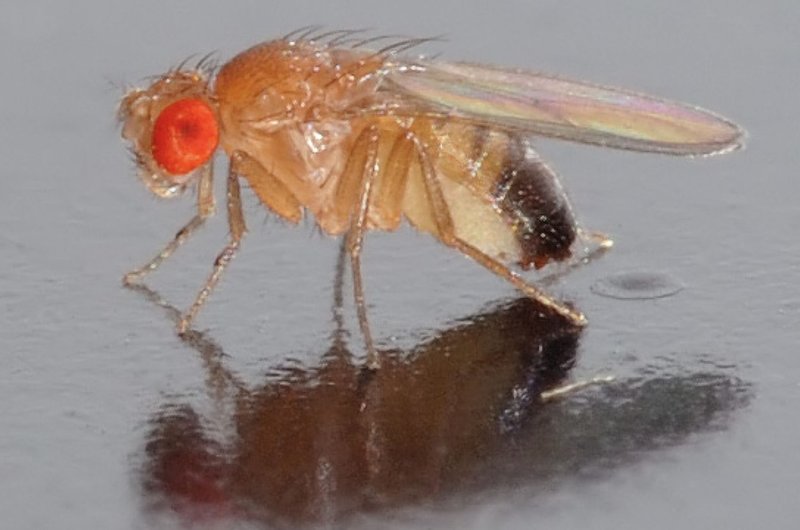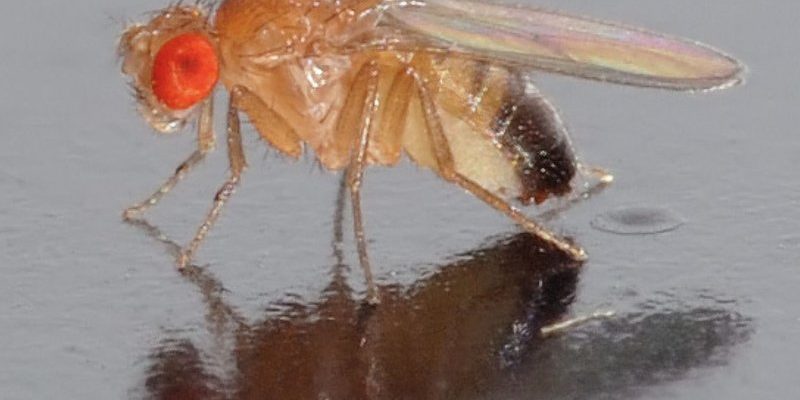
Imagine a tiny creature that can teach us about inheritance, behavior, and even diseases like Alzheimer’s. It’s sort of like having a mini-laboratory in your kitchen! So, let’s dive into some surprising facts about these little flies that you probably didn’t know.
1. The Fruit Fly’s Life Cycle is Lightning Fast
You might be surprised to learn just how quickly a fruit fly can go from egg to adult. Under ideal conditions, the entire life cycle can take as little as 8 to 10 days! That’s right—these flies can lay their eggs on rotting fruit, and within a week, those eggs can become full-grown flies. If you think about it, it’s kind of a race against time, as they must find food and reproduce before their short lives are over.
This rapid life cycle is one reason fruit flies are key players in scientific research. Scientists can observe multiple generations in a short time, allowing them to study genetic traits, behaviors, and even how changes in the environment might affect populations.
The Stages of Development
Let’s break down the stages of the fruit fly’s life cycle:
- Egg: Laid on the surface of fermenting fruit.
- Larva: Hatched from the egg, they feed on the fruit’s nutrients.
- Pupa: After about five days, they transform into a pupa, where they undergo metamorphosis.
- Adult: The new fly emerges, ready to start the cycle over again.
2. They’re a Scientist’s Best Friend
Fruit flies are like the unofficial mascots of genetic research. They’ve been used in laboratories for over a century to study everything from genetics to developmental biology. Here’s the thing: their simple genetic structure and rapid reproduction make them ideal for experiments.
For example, the discovery of inheritance patterns in fruit flies helped pave the way for our understanding of genetics. In fact, Thomas Hunt Morgan won the Nobel Prize in 1933 for his groundbreaking work with these flies. He discovered the idea of sex-linked traits using fruit flies, showing that genes are located on chromosomes.
Why Are They So Important?
To put it in perspective, consider this: studying fruit flies has contributed to our understanding of complex conditions like:
- Parkinson’s Disease: Research has shown how genetic mutations affect dopamine production.
- Alzheimer’s Disease: Flies have been used to study the effects of amyloid plaques.
- Drug addiction: Their behavior can model human addiction responses.
By analyzing their genetic makeup, scientists can unlock secrets to many human health issues, making fruit flies small but mighty allies.
3. They’re More Than Just a Pest
While it’s easy to see fruit flies as pests, they actually play important roles in nature. They are pollinators and help break down decaying organic matter, making nutrients available for plants. Think of them as nature’s clean-up crew. When fruit starts to rot, the fruit fly is there, helping to return those nutrients to the ecosystem.
This process helps maintain the balance in nature, making fruit flies essential for healthy ecosystems. So, the next time you swat at one, remember their purpose!
4. They Have a Unique Way of Communicating
You might be wondering how fruit flies communicate with each other. Believe it or not, they don’t have vocal cords like we do! Instead, they use a variety of chemical signals, or pheromones, to relay messages about food sources, mating, and territory.
These chemical signals can attract other flies or even warn them of danger. For instance, if a fruit fly detects the smell of a predator, it might release a pheromone that signals others to stay away. It’s a tiny world with a sophisticated communication system, even if it does sound a bit gross at times!
The Role of Vision in Communication
Additionally, their large, compound eyes play a critical role in sensing their surroundings. They can perceive a wide range of colors and movements, which helps them locate ripe fruit or potential mates. Isn’t it fascinating to think about how these small creatures interact with their environment in such complex ways?
5. Fruit Flies Have an Insatiable Appetite
Fruit flies aren’t picky eaters. Their diet primarily consists of overripe fruits and vegetables, but they can also consume a variety of liquids. They have taste receptors on their feet, which helps them decide if a surface is suitable for feeding.
Imagine walking barefoot on an ice-cold sidewalk; you’d probably hesitate to step on it! In the same way, fruit flies “taste” surfaces before landing to make sure they’re in the right spot for a snack. This adaptation ensures they find the best food sources, allowing their little lives to flourish.
Why Do They Prefer Overripe Fruit?
So, why are fruit flies so attracted to rotting fruit? The fermentation process releases ethanol, which entices these insects. The smell of ethanol is a dinner bell for fruit flies, signaling that their next meal is nearby. It’s a win-win situation: they feast while contributing to the decomposition process.
6. They Can Change Colors!
If you ever thought fruit flies all looked the same, think again. They come in various genetic strains that can display different colors. For instance, some fruit flies have mutations that cause them to be bright red, while others might exhibit a mesmerizing white or black.
This genetic variation not only makes them visually interesting but also serves as a great model for understanding how traits are passed on.
Color Changes and Genetic Mutations
Color changes in fruit flies can occur due to mutations in specific genes, which can be easily studied in a lab setting. These mutations help scientists observe how color traits are inherited, further cementing the fruit fly’s status as a powerful research tool.
7. They Have a Quick Escape Response
You might have noticed that fruit flies are fast and agile. Their quick reflexes help them escape potential threats in an instant. When they sense a predator nearby, they can take off in a flash, darting away with impressive speed.
But how do they know when to escape? Their sensory receptors are finely tuned to detect movement and changes in air pressure, allowing them to react swiftly.
Reflexes in Action
Here’s a little experiment you can try at home—if you have a fruit fly in your kitchen, simply wave your hand near it. Most likely, it will zip away before you can even say “gotcha!” This instinctive behavior helps them survive in nature, where predators are always lurking.
8. They Can Help Us Understand Aging
Aging is a complex process, and surprisingly, fruit flies have been instrumental in helping scientists figure out its mechanisms. Studies on fruit flies can reveal insights into how aging affects cellular processes, metabolism, and even lifespan.
For example, researchers have identified genes in fruit flies that can extend their lifespan by affecting their metabolic rates.
The Science Behind Aging Studies
By examining these processes in fruit flies, scientists can draw parallels to human aging. Since fruit flies have a much shorter lifespan, they allow researchers to study the aging process in a fraction of the time compared to humans.
9. Their Genetics Are Remarkably Similar to Humans
As weird as it might sound, about 60% of fruit fly genes are similar to human genes. This striking similarity is one reason why fruit flies are used in human disease studies. By understanding how certain genes work in fruit flies, researchers can gain insights into what happens in human biology.
It’s like having a tiny, efficient model that helps scientists unravel complex biological mysteries on a larger scale.
Why This Matters
This genetic connection is vital in medical research. It allows scientists to explore genetic diseases, develop treatments, and test drug efficacy, all thanks to our tiny friends.
10. They’re a Symbol of Resilience
Finally, fruit flies are a testament to resilience and adaptability. They thrive in various environments, showing remarkable persistence in the face of challenges, such as changes in temperature or food availability.
Their ability to survive and reproduce even under less-than-ideal conditions speaks to the heart of evolution. Just like us, they adapt and find ways to make the best of what they have.
The Bigger Picture
Understanding fruit flies can teach us not just about the flies themselves, but also about resilience in nature and our own lives. It’s a reminder that even the tiniest creatures can have a huge impact.
Fruit flies are more than just annoying little bugs hovering around your bananas; they are a rich source of information that scientists rely on daily. So next time you see one, take a moment to appreciate its incredible journey through life, science, and nature. In a way, they embody the story of survival—and perhaps that’s something we can all learn from.

